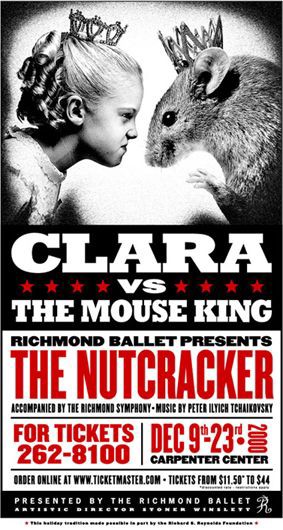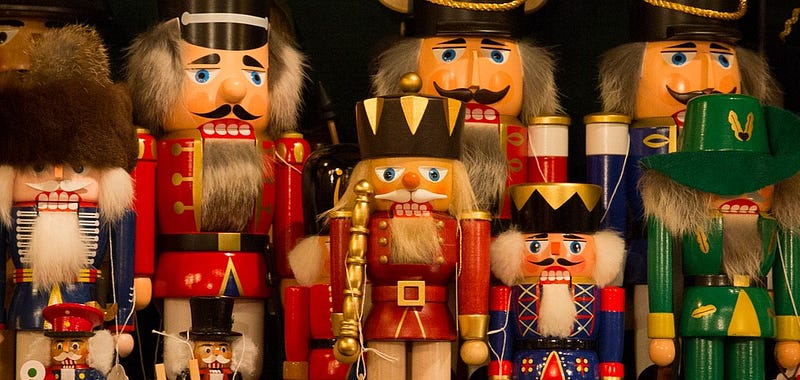Chances are that the next weeks will bring a bit of Nutcracker into your life. We offer some perspective with Gregory Weatherford’s article about a troupe of ballerinas on the cusp of womanhood, competing for roles in the famous ballet about the hard-jawed hero.
By Greg Weatherford.
Most of the ballerinas are girls between the ages of ten and thirteen.
These are, to put it gently, not easy years to be a girl. They’re growing, or not, they’re getting gangly or getting bulky, they’re getting figures, or not. They’re on the cusp of everything.
So life lessons can come from anywhere. Sometimes they come from a 122-year-old ballet about a little girl who has a dream…
First published in Richmond, Virginia’s Style Weekly in 2002, when The Nutcracker was due for an overhaul, this article gives a glimpse into the constant performance of girlhood and the sometimes reluctant transition to bigger roles.
*
Read about what’s at stake in the excerpt below. Or click here to enjoy the full article, specially formatted for online reading.
*
… There are about 120 children in [Richmond Ballet’s] The Nutcracker every year. Most of them are girls between the ages of ten and thirteen.
These are, to put it gently, not easy years to be a girl. They’re growing, or not, they’re getting gangly or getting bulky, they’re getting figures, or not. They’re on the cusp of everything.
So life lessons can come from anywhere. Sometimes they come from a 122-year-old ballet about a little girl who has a dream.
During The Nutcracker, they learn all kinds of things. Professionalism. Hard work. The power of art and of beauty.
Other things, too.
“When you’re a boy,” explains twelve-year-old Olivia, taking a break from rehearsals, “you don’t have to care as much about your hair. In ‘Mother Ginger and Her Children,’” a scene in The Nutcracker, “if you’re a girl you have to have your hair braided.”
“Last year,” adds one friend, “I remember the braids were, like, pulling my eyebrows back they were so tight.”
The other girls nod agreement. They are silent for a moment.
“Last year we were stuck in traffic before one performance,” one muses. “And we were, like, going a foot a minute? And this was, like, the one time my mom didn’t have her cell phone? I was so worried.”
It is a weekend in November, and these girls, mostly students at the ballet’s school, are at rehearsal. As usual. The Nutcrack
er’s child dancers start rehearsing six weeks before the adults do. They practice every weekend, all day. When the professional dancers join in, the entire group does a
eries of full rehearsals before opening night.
Every one of the sixteen girls in this gaggle wants to be Clara, whose dream the ballet depicts.
“To be Clara, you try out for Party Child,” says one girl. “Then they might hold you back to try out for Clara. They’ll say, like, ‘You and you and you, you stay behind for a few minutes. Thank you very much, the rest of you.’”
“Everybody wants to be Clara,” says one girl. “She’s the star.”
“She’s the child star,” corrects another. “She has to be the right size. They have to fit the costume and they have to not be taller than the boy. They have to have a certain look and have a certain way they hold themselves.”
“This year I got to try out for Clara because there was a short prince and I’m short,” says another. “I didn’t get it, though.”
“A girl cried last year during tryouts,” says a girl.
“It’s just a big deal,” says another. They all nod, soberly.
Read the full article here.
— — —
Greg Weatherford has been a reporter, features writer, and news editor in Virginia for a quarter century, and he is one of Broad Street’s founding advisors. He’s seen some Nutcrackers in his day.









